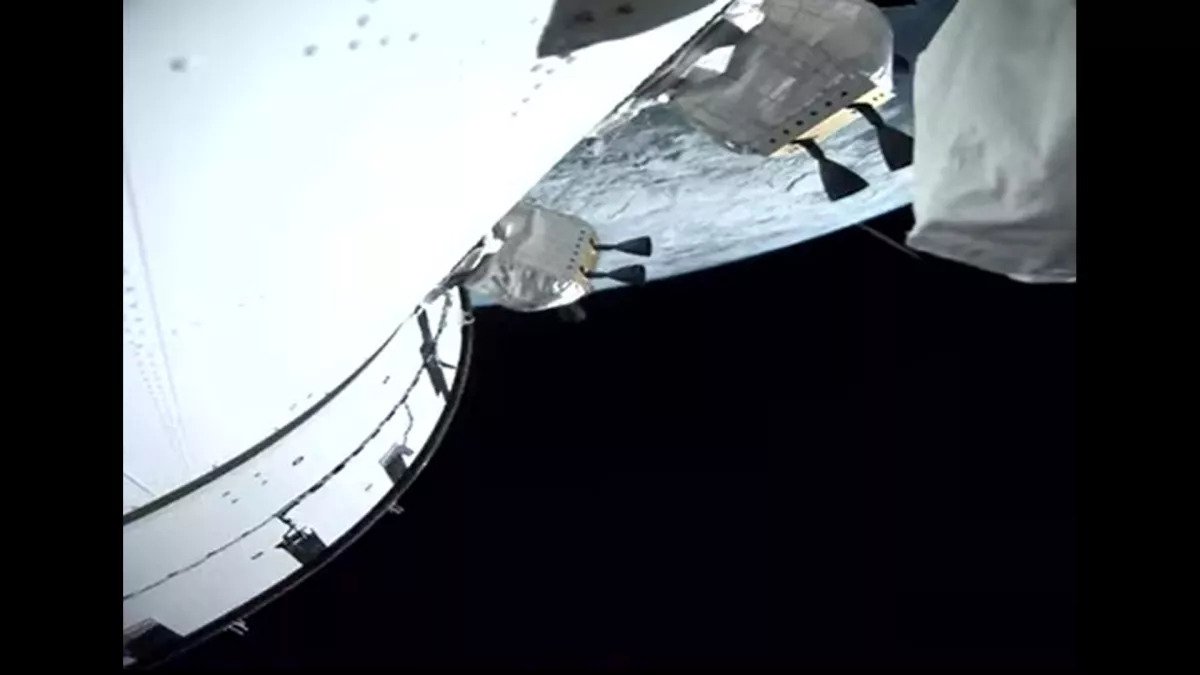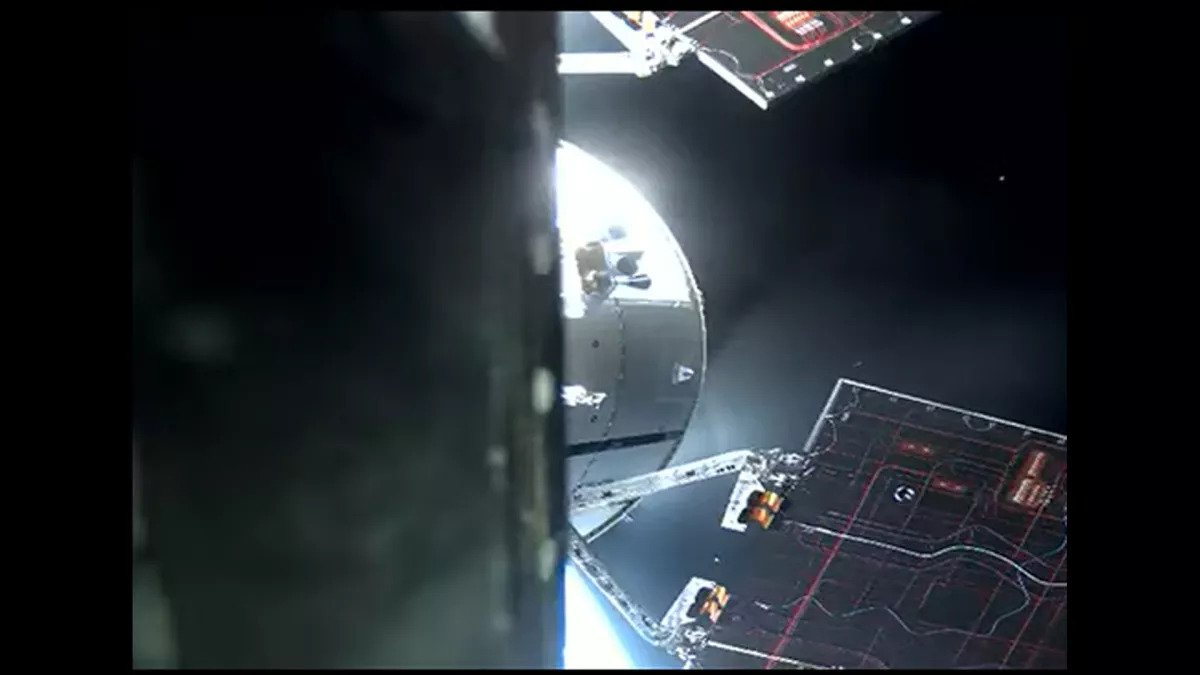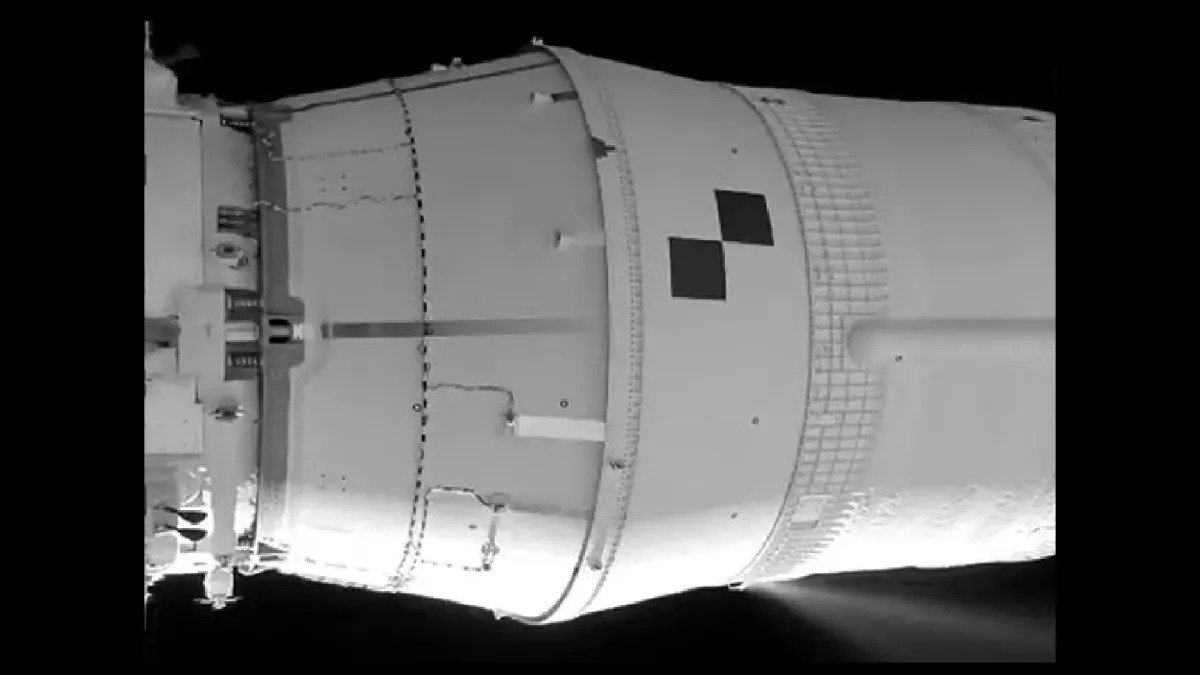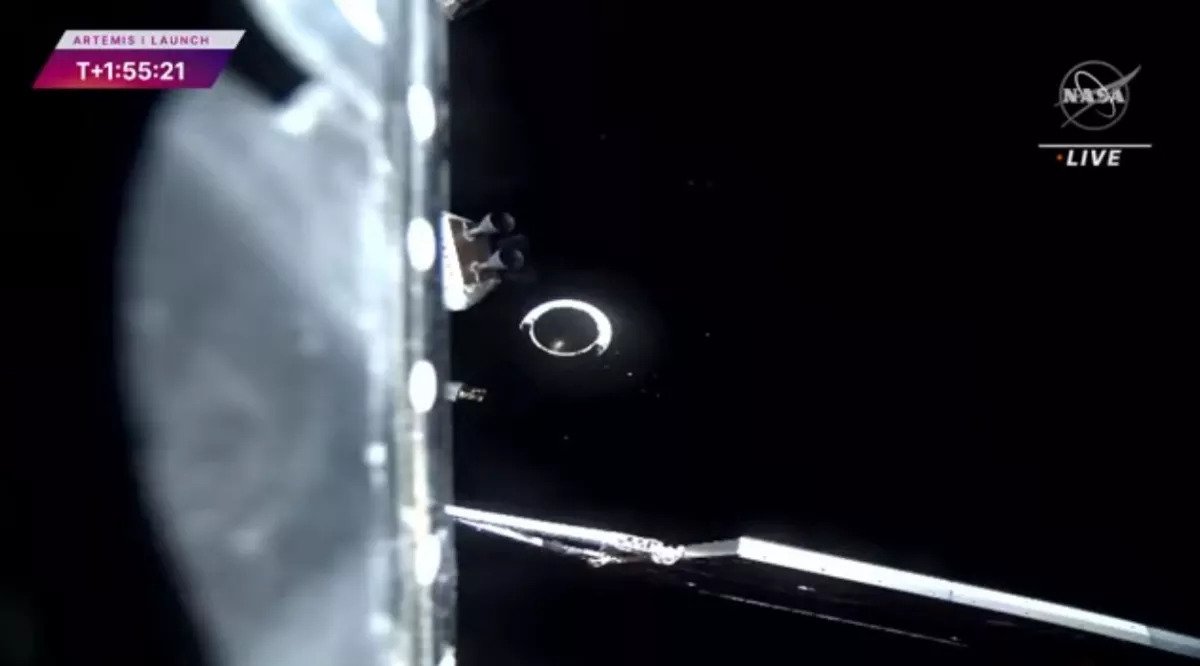The Orion spacecraft successfully deployed its solar arrays in orbit and took the first photos of itself against the background of the Earth. Then the upper degree of the SLS rocket brought it to the lunar trajectory and disconnected. In six days, the device should reach the orbit of our moon.

First photos from the Orion spacecraft
This morning, the Space Launch System rocket launched the Orion spacecraft into Earth orbit, carrying out a test mission under the Artemis program. The side boosters first separated from the spacecraft, then the main unit. However, the upper stage of the rocket remained attached to it.
It is the one that sent it on a flight to the Moon. But before that happened, the spacecraft deployed its own solar arrays. They have the shape of the letter X, each of the “wings” of which reaches a seven-meter length. At the ends of each of them there are cameras that turned on and took the first few pictures.

The specialists were mainly interested in whether the spacecraft itself was damaged and whether all the solar arrays were deployed correctly. The pictures confirmed that everything is fine. In addition, a part of the Earth’s disk covered with clouds fell on the first of them.
Further flight
After that, at the set point of the orbit, the upper stage engines turned on, and it put Orion on a trajectory to the Moon, after which it separated. The moment of this event is also recorded in one of the photos. This phase of the flight was also successfully completed.

Now the spacecraft is waiting for another six days of flight before it reaches the Moon. The maximum approach to it at 97 km will take place on Monday, November 21. After that, the spacecraft will move into a distant orbit and reach the mark of 400-170 km from Earth. This is further than any of the Apollo spacecraft has ever flown.

But this time, only the manikins Helga and Zohar on board will be able to enjoy the view from there. They are also experiencing a return to Earth, which will happen in 26 days. People will fly on a spaceship to the Moon only in 2024.
According to www.space.com
Follow us on Twitter to get the most interesting space news in time
https://twitter.com/ust_magazine

